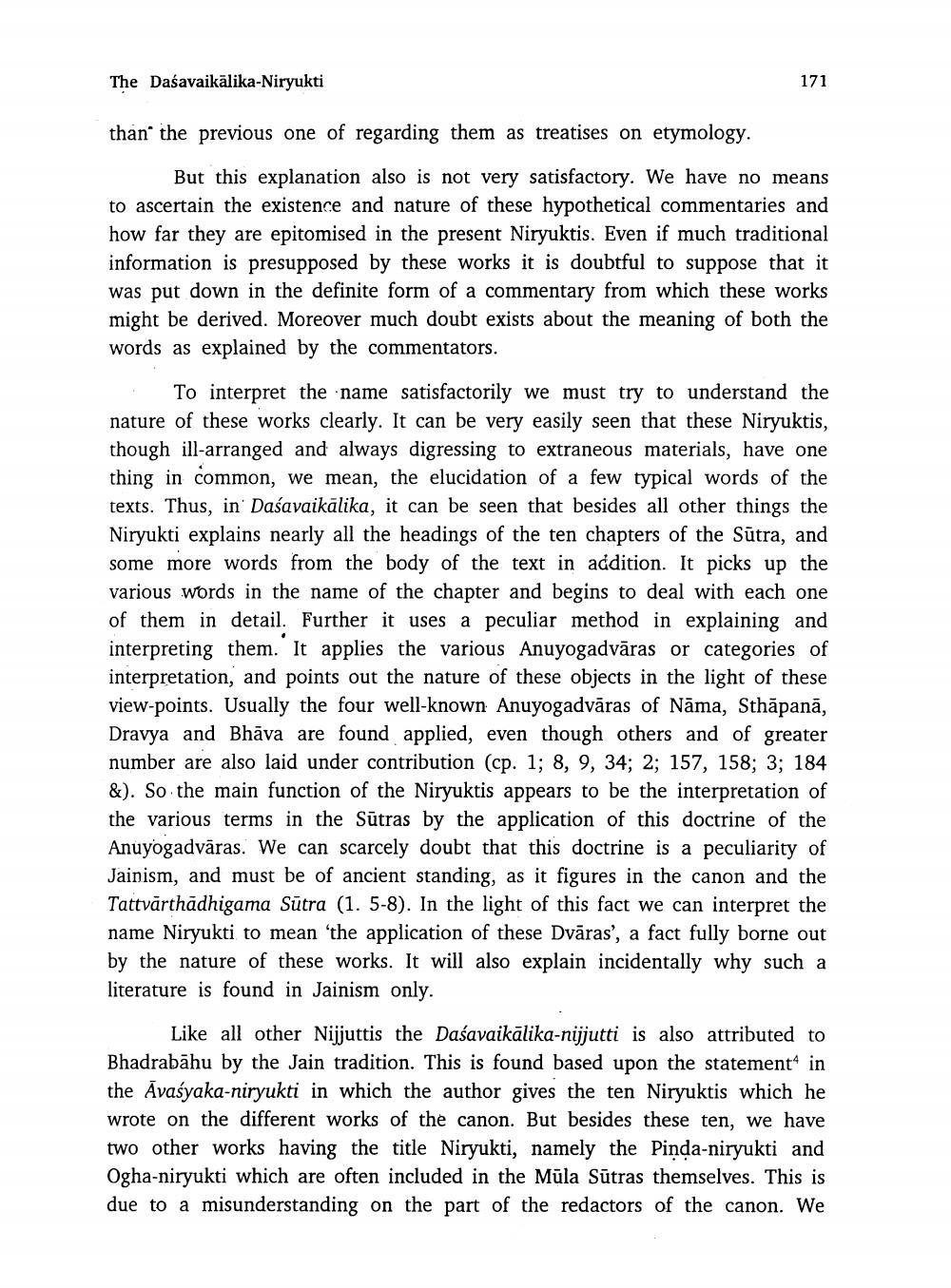________________
The Daśavaikālika-Niryukti
171
than the previous one of regarding them as treatises on etymology.
But this explanation also is not very satisfactory. We have no means to ascertain the existence and nature of these hypothetical commentaries and how far they are epitomised in the present Niryuktis. Even if much traditional information is presupposed by these works it is doubtful to suppose that it was put down in the definite form of a commentary from which these works might be derived. Moreover much doubt exists about the meaning of both the words as explained by the commentators.
To interpret the name satisfactorily we must try to understand the nature of these works clearly. It can be very easily seen that these Niryuktis, though ill-arranged and always digressing to extraneous materials, have one thing in common, we mean, the elucidation of a few typical words of the texts. Thus, in Daśavaikālika, it can be seen that besides all other things the Niryukti explains nearly all the headings of the ten chapters of the Sūtra, and some more words from the body of the text in addition. It picks up the various words in the name of the chapter and begins to deal with each one of them in detail. Further it uses a peculiar method in explaining and interpreting them. It applies the various Anuyogadvāras or categories of interpretation, and points out the nature of these objects in the light of these view-points. Usually the four well-known Anuyogadvāras of Nāma, Sthāpanā, Dravya and Bhāva are found applied, even though others and of greater number are also laid under contribution (cp. 1; 8, 9, 34; 2; 157, 158; 3; 184 &). So the main function of the Niryuktis appears to be the interpretation of the various terms in the Sūtras by the application of this doctrine of the Anuyogadvāras. We can scarcely doubt that this doctrine is a peculiarity of Jainism, and must be of ancient standing, as it figures in the canon and the Tattvārthadhigama Sūtra (1. 5-8). In the light of this fact we can interpret the name Niryukti to mean 'the application of these Dvāras', a fact fully borne out by the nature of these works. It will also explain incidentally why such a literature is found in Jainism only.
Like all other Nijjuttis the Daśavaikālika-nijjutti is also attributed to Bhadrabāhu by the Jain tradition. This is found based upon the statement in the Āvasyaka-niryukti in which the author gives the ten Niryuktis which he wrote on the different works of the canon. But besides these ten, we have two other works having the title Niryukti, namely the Pinda-niryukti and Ogha-niryukti which are often included in the Mūla Sūtras themselves. This is due to a misunderstanding on the part of the redactors of the canon. We




